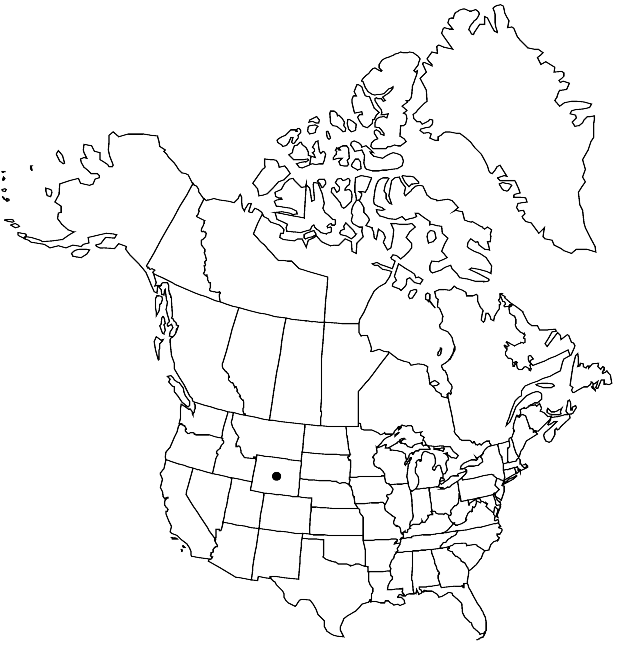Difference between revisions of "Physaria condensata"
Rhodora 41: 407, plate 556, figs. 1, 9, 10. 1939.
FNA>Volume Importer |
FNA>Volume Importer |
(No difference)
| |
Revision as of 22:50, 16 December 2019
Perennials; caudex usually simple, rarely branched, (enlarged with persistent leaf bases, cespitose); (silvery) pubescent throughout, trichomes several-rayed, rays typically furcate, (fused at base, arms slender, tuberculate throughout). Stems several from base, decumbent to ascending, (arising laterally beneath a dense rosette), less than 0.1 dm. Basal leaves: (petiole slender); blade (horizontal on the ground), obovate, 0.5–1.5 cm (width 4–8 mm, base tapering abruptly to petiole), margins entire, (apex usually acute, surfaces silvery from a dense incrustation of appressed, stellate trichomes). Cauline leaves: blade oblanceolate, 0.5–1 cm (width 2–3 mm), margins entire, (surfaces densely stellate pubescent). Racemes congested, (subumbellate, often almost sessile, barely exceeding basal leaves). Fruiting pedicels (divaricate, straight), 5–10 mm. Flowers: sepals (yellowish green), narrowly lanceolate, 4–5 mm; petals (erect), oblanceolate, 6–7 mm, (claw weakly differentiated from blade). Fruits didymous, ovate, inflated, 4.8–6 × 6–10 mm, (papery, basal and apical sinuses deep); valves (retaining seeds after dehiscence), pubescent, trichomes loosely spreading; replum obovate, 3–4 mm, as wide as or wider than fruit; ovules 8 per ovary (2–4 abortive); style 4–6 mm. Seeds flattened.
Phenology: Flowering May–Jun.
Habitat: Calcareous knolls and ridges, clay banks, limey slopes, shaley hills, clay patches
Elevation: 1800-2400 m
Discussion
Of conservation concern.
Selected References
None.
